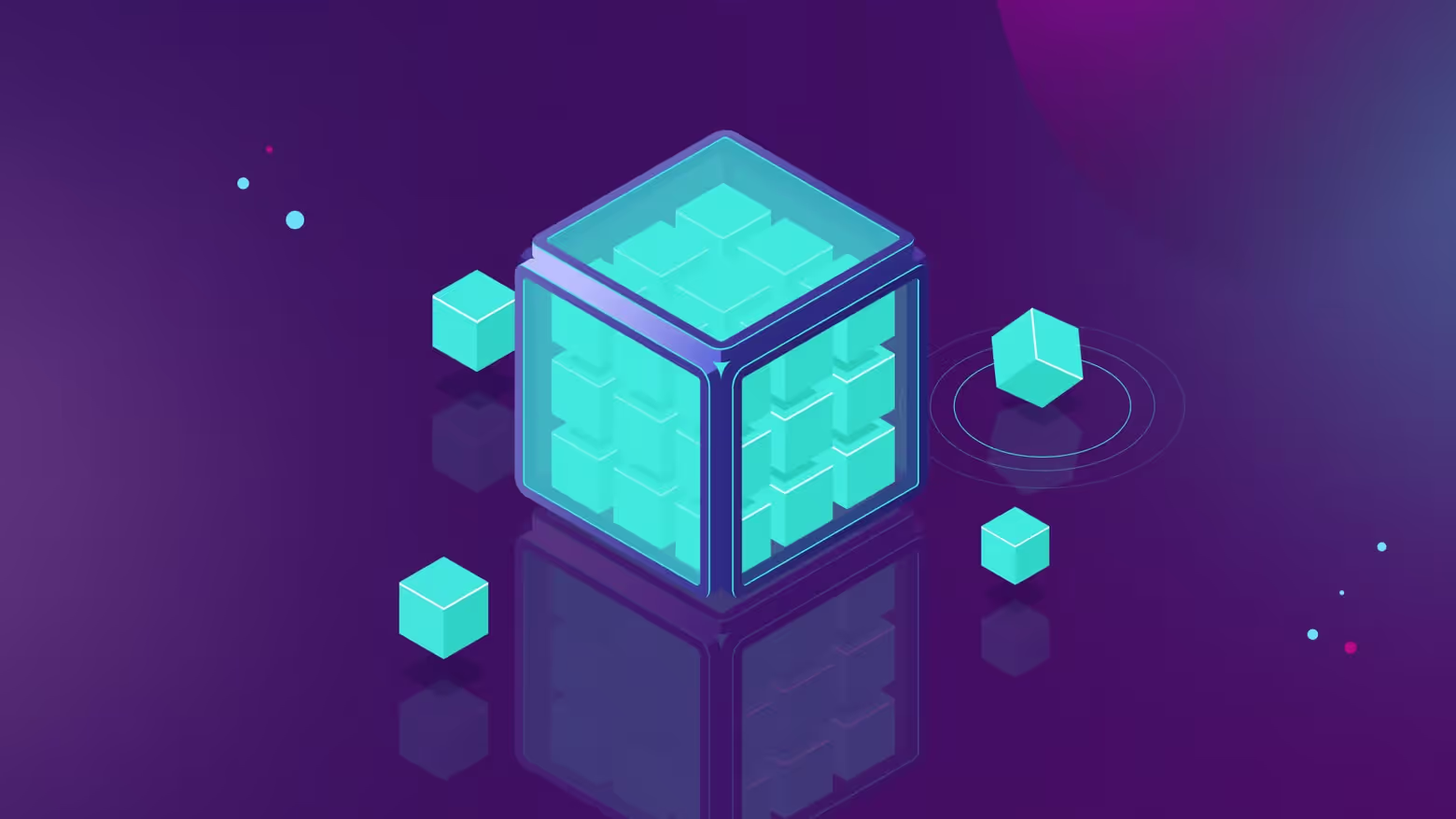
What Are Microservices?

Microservices are a modern software development approach emphasizing building applications as a collection of small, independent, and loosely-coupled services. This approach has gained widespread popularity recently due to its ability to help organizations build and deploy software more quickly and efficiently.
This approach has made it easier to maintain, scale, and update applications as needed while enabling teams to work more autonomously and collaborate more effectively. However, if you're unaware of the Microservices architecture for developers, we've got you covered. In this article, you'll discover all the essential details related to microservices and their benefits. Let's get going!
What Are Microservices?
Microservices are a software development approach that involves breaking down an extensive application into more minor, independent services that can communicate with each other through APIs. Each microservice performs a specific task or function and can be developed, tested, and deployed independently of others.

This approach allows for greater flexibility, scalability, and resilience in software development. Microservices can be developed using a variety of programming languages and frameworks, and they are often deployed in containers such as Docker to simplify deployment and management.
The concept of microservices has its roots in Service-Oriented Architecture (SOA), which emerged in the late 1990s and early 2000s as a way to build scalable and adaptable software systems. The term "microservices" was coined by Dr. Peter Rogers, who used it to describe a new approach to building software systems that emphasized small, independent components. However, the term gained mainstream recognition in 2014 when Martin Fowler and James Lewis published a paper titled "Microservices: a definition of this new architectural term."
The majority of the time, these services have their technology stack, which includes the database and the data management model; communicate with one another through a combination of REST APIs, event streaming, and message brokers; and are organized by business capability, with the line that separates services frequently being referred to as a bounded context.
Difference Between Microservices and Monolithic Architecture
All operations in a monolithic architecture are interdependent and performed as a single service. This implies that the whole architecture has to be scaled if even a single process inside the application encounters a demand increase. The larger the code base of a monolithic program, the more difficult it is to add or improve functionality.
Because of this intricacy, trying out new things and putting in place novel approaches is challenging. Due to the high number of interdependent and closely connected processes in a monolithic design, a single process failure may significantly influence the availability of the whole program.

An application with a microservices architecture is constructed from decentralized modules that perform their respective tasks as separate services. Lightweight application programming interfaces (APIs) allow these services to interact according to a well-defined interface.
The services of an organization are designed to aid in the operation of the company, and each service has a specific purpose. Each service may be updated, launched, and expanded separately to match the needs of an app's features.
Essential Characteristics of Microservices Architecture
Microservices architecture is a software development approach that structures applications as a collection of small, reusable components. The essential characteristics of microservices architecture include:
Service-oriented
Microservices architecture is a service-oriented architecture that structures applications as a collection of services. Each service is designed to perform a specific function and can be developed, deployed, and scaled independently of other services.
Decentralized
It distributes the responsibilities and ownership of the system across multiple services. Each service is owned and managed by a separate development team, which enables faster development and deployment of new features and updates.
Loosely Coupled
A loosely coupled architecture that minimizes the dependencies between services. Each service communicates with other services through well-defined interfaces, which enables them to evolve independently without impacting other services.
Designed for Businesses
The microservices architecture model often arranges services according to what is most valuable to the company. Unlike the siloed approach of conventional monolithic development, it relies on multidisciplinary groups. These teams could be responsible for the user interface, the database, the technological layers, or the server-side logic, respectively.
Zero Dependency
Individual services can be independently designed, deployed, operated, and scaled with a microservices architecture. Services do not need to disclose their source code or internal workings to one another. Each component talks to the other via well-defined application programming interfaces.
Straightforward Routing
Microservices work similarly to the traditional UNIX system in that they take in requests, analyze them, and respond appropriately. Contrary to the operation of many other products, such as ESBs (Enterprise Service Buses), this one does not. Here, we use cutting-edge technology for message distribution, choreography, and the implementation of business rules.
Microservices and DevOps
Since microservices are often tiny services that can be delivered frequently, it's easy to see why this architectural style is touted as well-suited for DevOps and CI/CD. But if we take a different perspective, we may say that DevOps is essential to the success of microservices designs.
While there are many issues with monolithic applications, it's worth noting that they do have one advantage: they are not a distributed system with many moving components or rely on different technologies. But it would be dangerous to approach microservices without significant investments in deployment, testing, and lifecycle automation because of the tremendous increase in complexity, moving parts, and relationships that come with microservices.
Why Is Cloud Computing Beneficial for Microservices Architecture?
Cloud computing and microservice architectures can work together, but they are often talked about together for more than just being popular trends. There are some essential reasons why they are linked. This is because microservices are often deployed on cloud platforms due to several advantages, such as scalability and agility, that the cloud provides for managing and deploying microservices.
The usage and cost gains associated with deploying and scaling components individually are among the key advantages an architecture based on microservices offers. Although these advantages would still be available to some degree with on-premises architecture, the combination of tiny, independently scalable components and on-demand, pay-per-use connectivity is where significant cost savings may be achieved.
Running microservices in the cloud offers several advantages, including:
- Scalability: Cloud platforms can scale resources up or down as needed, allowing microservices to respond to changes in demand quickly and efficiently.
- Flexibility: Cloud platforms allow for rapid deployment and easy management of microservices, making it easy to add or remove services as needed.
- Reliability: Cloud platforms offer high availability and fault tolerance, ensuring that microservices are always available to users.
- Cost-effectiveness: Cloud platforms offer pay-as-you-go pricing models, allowing organizations to only pay for their resources, which can be more cost-effective than traditional on-premise infrastructure.
- Security: Cloud platforms typically offer robust security features and regular updates, ensuring that microservices are secure and compliant with industry standards.
- Integration: Cloud platforms provide easy integration with other cloud services, such as databases, messaging, and monitoring tools, making it easy to build and manage complex microservices architectures.
Overall, running microservices in the cloud offers numerous benefits that can help organizations to build and manage complex applications more efficiently and effectively.
What Are the Benefits of Using a Microservice Architecture?
The value of microservices is often better appreciated via relatively straightforward commercial and organizational advantages, even though most of the debate around them has centered on architectural definitions and features. Some of its significant advantages include:
- Agility: Microservices encourage decentralized service delivery using autonomous, service-specific teams. Teams function in a limited, transparent environment where they can make decisions and move rapidly. It reduces the length of the development cycle. You stand to gain a great deal from the organization's overall productivity.
- Scaling Flexibility: With microservices, each service may be independently scaled to match the demand of the application feature it underpins. This allows teams to sustain availability despite a rise in demand for a service and right-size infrastructure requirements and correctly evaluate the cost of a feature.
- Continuous Integration: Thanks to its ability to support continuous integration and delivery, microservices make it simple to experiment with new concepts and revert to previous versions if necessary. As there is less to lose by trying something new, new features may be developed and released more quickly.
- Freedom of Technology: There is no "one size fits all" approach to microservices architectures. Team members may choose whichever method they feel will best address their concerns. Teams developing microservices may thus choose the most appropriate technology for the task at hand.
- Reusable Components: By breaking down large applications into manageable chunks, teams may put different parts to use. Services developed for one purpose may be used to support another. Adding new features to an app in this way eliminates the need to start from zero while developing it.
- Failure Resilience: Increasing an application's resilience to failure, service independence does just that. If a single part of a monolithic design fails, the whole application may crash. Applications that use microservice architectures may recover from a complete failure of a single service by gradually reducing the level of service they provide rather than crashing entirely.
Final Words
Since the monolithic architecture does not have reusable components and works as making the whole application in a single go, it was hard for developers to modify the applications and locate bugs. But introducing microservices has become easier since it allows you to divide the application development into smaller, reusable components. And we hope you understand what Microservices are after reading this article. So, today, use microservices architecture in your application for reusability and better scalability!
The Easiest Way to Implement, Manage, and Scale Microservice Architectures? Virtual DevOps by Mogenius
mogenius provides engineering teams with a next-generation PaaS, focused on virtualizing daily DevOps workflows. Developers can leverage mogenius’ pre-built developer tools cut DevOps to mere minutes by automating deployments, monitoring, Kubernetes, and more.
- Deploy straight from your codebase to the cloud in a few clicks with a pre-built CI/CD pipeline
- Keep your infrastructure centralized and transparent with simplified cost management
- Setup and run Kubernetes without doing months of research first
- Bring your own cloud or run on the mogenius cloud
- And much more!
FAQ
Interesting Reads
The latest on DevOps and Platform
Engineering trends
Subscribe to our newsletter and stay on top of the latest developments


